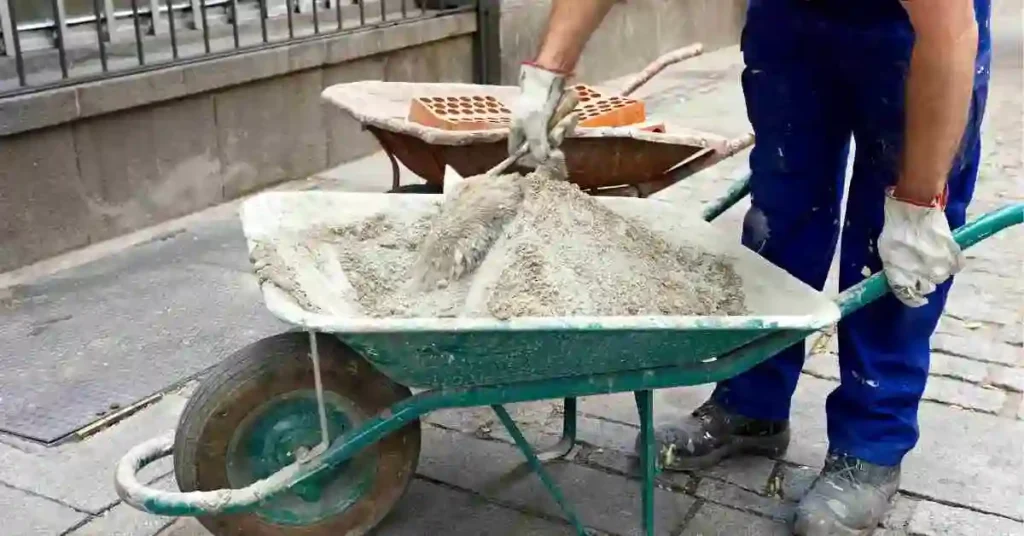A wheelbarrow is an indispensable tool in gardening, construction, and various outdoor projects.
It helps transport heavy materials from one place to another, making work more manageable and efficient.
However, after frequent use, your wheelbarrow can accumulate dirt, mud, cement, and other materials, affecting its functionality and lifespan.
Regular cleaning keeps your wheelbarrow in good condition and ensures it’s ready for your next project.
This article will guide you through how to clean wheelbarrow, covering everything from general maintenance to removing specific types of debris.
How To Clean A Wheelbarrow (General Cleaning)
Materials Needed:
- Hose or large buckets of water
- Mild detergent or dish soap
- Stiff scrub brush, sponge, or steel wool for tougher spots
- Protective gloves to avoid skin irritation
- Soft cloth or towel for drying
Detailed Steps:
- Pre-Rinse: Start by removing loose dirt and debris with a hose or buckets of water. This pre-rinse makes the cleaning process easier.
- Apply Cleaning Solution: Mix water with a mild detergent to create a soapy solution. Apply this solution liberally over the entire surface of the wheelbarrow.
- Scrub Thoroughly: Use a stiff scrub brush or sponge to scrub the wheelbarrow’s surface. For rust spots or tough grime, steel wool can be effective. Work in sections, ensuring every part is covered.
- Rinse Off Soap: After scrubbing, rinse the wheelbarrow thoroughly with clean water to remove all soap residue.
- Dry Completely: Use a soft cloth to wipe down the wheelbarrow, or allow it to air dry in a sunny spot to prevent rust.
How to Clean Cement from Wheelbarrow

Cement can harden quickly and become difficult to remove. Following these steps will help ensure your wheelbarrow is free from hardened cement.
Materials Needed:
- Masonry chisel and hammer
- Vinegar or a commercial concrete dissolver
- Scrub brush
- Safety goggles for eye protection
Detailed Steps:
- Manual Removal: Wear safety goggles. Use the chisel and hammer to gently chip away at the larger chunks of cement. Be careful not to damage the wheelbarrow.
- Chemical Softening: Apply vinegar or a commercial concrete dissolver to remaining cement residues. These chemicals help soften the cement for easier removal. Allow it to sit according to the product’s instructions or for several hours if using vinegar.
- Scrub and Rinse: After the chemical treatment, use a scrub brush to remove the softened cement in your wheelbarrow. Rinse thoroughly with water.
- Repeat if Necessary: For stubborn areas, repeat the chemical treatment and scrubbing until the wheelbarrow is clean.
- Prevent Future Sticking: To prevent cement from sticking in the future, consider applying a light coat of mineral oil to the wheelbarrow’s surface before use.
How to Clean Mud from Wheelbarrow
Mud, while easier to clean, can still be a nuisance, especially when dried.
Materials Needed:
- Water
- Scrub brush or hose with a spray nozzle
Detailed Steps:
- Soften the Mud: If you have hauled mud in your wheelbarrow and it is dried, soak it with water to soften. Allow it to sit for 10-15 minutes.
- Scrub or Spray Away Mud: Use a scrub brush to loosen and remove the mud. Alternatively, a hose with a spray nozzle can be effective for washing away mud without manual scrubbing.
- Rinse Thoroughly: Ensure all mud is rinsed off, leaving the wheelbarrow clean.
- Dry Completely: Allow the wheelbarrow to air dry or wipe it down with a cloth.
How to Clean Paint Stains From Wheelbarrow
Paint spills or splatters can happen during painting projects and need to be removed carefully to avoid permanent damage.
Steps for Removal:
- Wet Paint: If the paint is still wet, rinse it off immediately with water and a mild detergent.
- Dried Paint: For dried paint, gently scrape off the excess with a putty knife. Then, apply a solvent like paint thinner or mineral spirits with a cloth to the stained area. Let it sit to soften the paint, then wipe away.
- Final Clean: Wash the area with soap and water, scrub gently, rinse, and dry.
How to Clean Tar and Asphalt Residues From Wheelbarrow
Tar and asphalt are particularly challenging due to their sticky and stubborn nature.
Steps for Removal:
- Solvent Application: Apply a solvent such as mineral spirits or a commercial tar remover to the affected area. Let it sit for a few minutes to soften the residue.
- Gentle Scraping: Use a putty knife to gently scrape the softened tar or asphalt off the wheelbarrow.
- Wash and Scrub: Clean the area with a detergent solution, scrubbing gently to remove any remaining residue.
- Rinse and Dry: Rinse the wheelbarrow thoroughly with clean water and dry it to prevent any damage or rust.
General Maintenance Tips:
- Regular Checks: Regularly inspect your wheelbarrow for signs of wear and tear, such as rust or cracks.
- Proper Storage: Store your wheelbarrow in a dry, covered area to protect it from the elements.
- Lubrication: Keep the wheel and any metal parts lubricated to prevent rust and ensure smooth operation.
- Immediate Cleaning: Try to clean your wheelbarrow immediately after use, especially if you’ve been transporting materials like cement or chemicals that can corrode or damage it.
Conclusion-
Maintaining a wheelbarrow is straightforward but requires regular attention, mainly if it’s used frequently or for transporting abrasive materials.
Learning how to clean a wheelbarrow effectively is a vital part of this maintenance.
By following these cleaning tips and maintenance practices, you can extend the life of your wheelbarrow, ensuring it remains a reliable tool for your gardening, construction, or hauling needs.
Regular cleaning preserves its functionality and saves time and effort in the long run.

